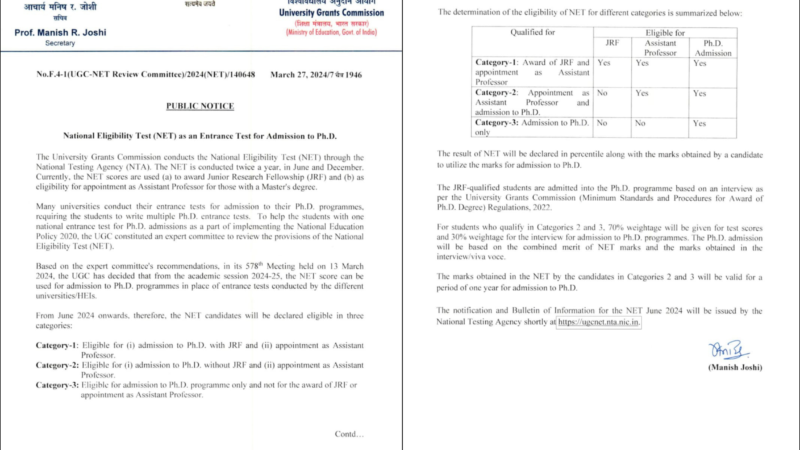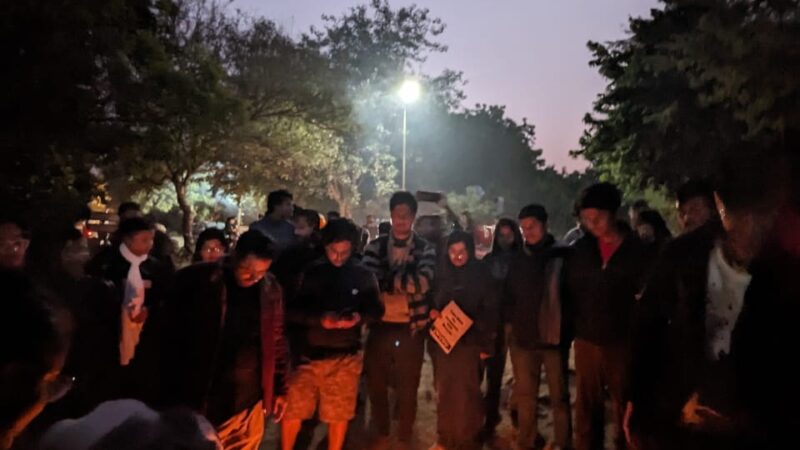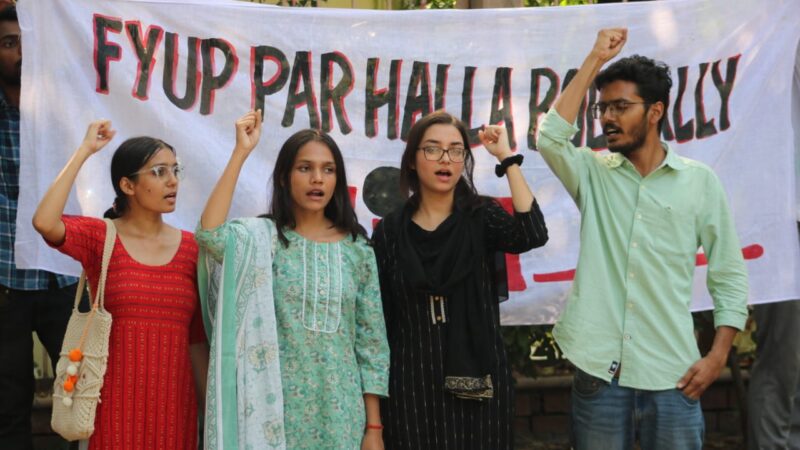Reject UPA’s Blueprint for Commercialization of Education: AISA to Organise ‘People’s Parliament on Education’ On Feb 21st 2011
Why Fund Cuts for Education, When Crores Looted in Scams and Black Money?
Resist Corporate-Run, Corrupt Government and Corporate Dictated Education Policies!
Reject UPA-II’s Education Bills that are a Blueprint for Fee Hike and Privatization!
 The UPA Government is hell bent on privatizing and corporatising education on the pretext of a ‘fund crunch.’ However, it is the same government whose every arm is immersed in scams – each fresh scam dwarfing the other. The Government is willing to allow thousands of crores of rupees to be plundered in mega scams and black money stashed in Swiss banks – at the cost of the rights of India’s young generation. The 2G Spectrum scam (which resulted in a loss of a whopping Rs 1,76,379 crores of public funds) and other such scams expose the falsity of excuses used by the powers-that-be: the amount lost due to the 2G Spectrum scam alone equals an astonishing 3% of our GDP. With this money, the government could have ensured education FOR ALL for next five years (as per the estimates of National Institute for Educational Planning and Administration, NIEPA). The amount of black money estimated to be stashed away in Swiss banks is nearly Rs. 1.5 trillion, nearly one-and-a-half times India’s GDP.
The UPA Government is hell bent on privatizing and corporatising education on the pretext of a ‘fund crunch.’ However, it is the same government whose every arm is immersed in scams – each fresh scam dwarfing the other. The Government is willing to allow thousands of crores of rupees to be plundered in mega scams and black money stashed in Swiss banks – at the cost of the rights of India’s young generation. The 2G Spectrum scam (which resulted in a loss of a whopping Rs 1,76,379 crores of public funds) and other such scams expose the falsity of excuses used by the powers-that-be: the amount lost due to the 2G Spectrum scam alone equals an astonishing 3% of our GDP. With this money, the government could have ensured education FOR ALL for next five years (as per the estimates of National Institute for Educational Planning and Administration, NIEPA). The amount of black money estimated to be stashed away in Swiss banks is nearly Rs. 1.5 trillion, nearly one-and-a-half times India’s GDP.
The spate of mega scams have been a direct result of the Government’s willing surrender of various sectors such as telecom and mining to the whims and diktats of corporates. Now the UPA Government is preparing to offer up the education sector to the same corporate loot, with a slew of legislations which are nothing but a blueprint for massive fee hikes and privatization (see overleaf for details of the proposed Bills). These proposed legislations (which include the Universities for Innovation Bill and the Foreign Educational Institutions Bill) come close on the heels of the farcical ‘Right to Education’ (RTE) Act which in its final form is a diluted version of a genuine ‘right’ to education.
No matter how the UPA tries to couch its agenda, the fact remains that all the proposed legislations will lead to institutions of higher education becoming exclusive enclaves of the rich. Their main agenda is to increase privatization and commercialization, expand the grip of foreign educational institutions (FEIs), and nullify the potential of social justice in higher education. Moreover, even the limited public funds made available for education are being siphoned off to corporate capital (including foreign) through Public Private Partnership (PPP).
These legislations are neither the need nor the demand of the people of the country. Rather, they are being forced on us by the diktats of the World Bank-WTO-IMF and corporate lobbies like ASSOCHAM, according to whose estimates education market in India stands at $25 billion and is projected to reach $50 billion by 2015. These Bills are evidently pre-requisites for bringing higher education under the WTO-GATS regime and are aimed at by-passing the legislative, judicial and executive processes that constitute the foundation of democracy as per the Constitution. It is to be noted that these “offers” made by the UPA to bring higher education under the WTO-GATS regime are entirely voluntary; there is no need for India to liberalize the education sector. Educational institutions in the US and the UK are currently facing an acute crisis due to the global economic meltdown, and are desperately in need for newer markets. It is a shame that the UPA is making India a willing partner in this attempt to bail out neo-liberal policies.
At a time when the UPA is planning to push through several anti-student policies, it is necessary that all those who aspire to see a democratic, inclusive education system in India – including students, teachers and parents – come together to express their demands and protest against the agenda of the government to further commercialize education. It is in this context that a ‘People’s Parliament on Education’ is being organized in New Delhi on 21st Feb 2011, which is the first day of the upcoming budget session of the Parliament. People’s Assemblies will also be organized in various state capitals.
The Agenda
At this ‘people’s parliament’, students, teachers, parents and democratic voices from across the country will debate and discuss policies related to education and put forward their agenda. There are several issues at hand, which urgently need to be discussed and addressed:
School-level Education: Primary and secondary education has to be universalized and made truly accessible to the poor. For instance, for years, concerned educationists have been highlighting the need for a common school system as well as increased state funding for primary education.
Higher Education: The existing regulatory structure in higher education is being demolished altogether in order to allow unregulated fee hikes, as is already becoming evident in school education as a result of the farcical Right to Education Act. Moreover, current budgetary allocation on higher education remains abysmally low.
Scuttling of Inclusion and Social Justice: Though SC/ST/OBC reservations are now legally mandatory (at least in government aided colleges and universities), we are nevertheless witnessing systematic attempts to keep students from deprived backgrounds away from the ambit of the higher education through blatant scuttling of the law of the land by university administrations. In the latest set of Bills, the Govt proposes to bid an official good bye to all kinds of affirmative action and reservation in higher education.
Students at the Mercy of Profiteering Swindlers: The deemed universities in India or sham institutions like the ‘Tri-Valley University’ of California are only a small foretaste of what is to come if higher education is opened up to profiteers both Indian and foreign. The various fake medical colleges approved even by regulatory bodies like Medical Council of India showed that ‘regulation’ is quite ineffectual in a system structured around profit-seeking. Remember, such sham educational institutions like Tri-Valley are not cell-phones that one can discard if one if dissatisfied with their quality! Even if they are exposed and thrown out, it will not be before irreversibly devastating the lives of thousands of hapless students.
Scuttling of Campus Democracy: Democratic participation of students in decision-making processes is also shockingly poor. Campuses across the country are witnessing a virtual emergency: administrations routinely crackdown on protests, student union elections have not been held in most colleges and universities, and the Lyngdoh Committee Recommendations are being used to scuttle organised student movements.
The common people of the country therefore have to demand an answer from the elected representatives: When will the loot of public resources end? When will all the illegally siphoned off money be retrieved and used for funding education and health? When will students’ right to education be a priority in public spending?
At the ‘People’s Parliament on Education’, we intend to set off a debate and discussion on the Policies, Bills and Acts in education, that people in the country truly wish to see, and would expect the elected representatives in the Parliament to take up, instead of merely endorsing the corporate-market led Bills that the government has been pushing. AISA appeals to you to participate in this nation wide campaign and in the People’s Parliament at Jantar Mantar on 21 Feb. 2011.



No Ifs No Buts!
Say No to Education Cuts!!
Khula dakhila sasti shiksha!
Kendra-rajya ki yahi pareeksha!!
Kapil Sibal Murdabad!
Resist the attempts to ‘market’ education!
ghotalon par rok lagao; shiksha par budget bahdao.
A drama on campus
Will the FTII, which once encouraged plurality of cinema, be reduced to providing skilled labour for an assembly line production system of films? Students and alumni are worried. Shoma Chatterji reports.
• Write the author
• Art
• Education
• Send to a friend
• Printer friendly version
25 November 2010 – Over the 50 years since its inception in 1961, the Film and Television Institute of India, Pune, has thrown up some of the best talents in Indian cinema. From Adoor Gopalakrishnan to Girish Kasavaralli, from Mani Kaul to David Dhawan, from Govind Nihalani to Kumar Shahani, fine creative artists have studied and trained at FTII, obtaining international recognition. Along with the National Film Archives of India (NFAI), the Films Division and the National Film Development Corporation (NFDC), the FTII has played a crucial role in the creation, preservation and propagation of our cross cultural heritage through the medium of Cinema.
With the stated vision of promoting plural cinema and the financial backing of the central Government, FTII has attracted students from various socio-economic and cultural backgrounds, thus ensuring a contextual richness and plurality reflected in their professional work. It has been a free space for the creative and aesthetic exploration of the art of film making.
And with their continued contribution to mainstream and regional cinema, the alumni of the Institute have ensured that FTII is recognised as a national centre for film education and practice. More than fostering these creative directors, FTII has also achieved much on the technical dimensions of cinema. It has brought out the best in cinematographers, sound designers, editors, actors and actresses who have done both the film industry and their educational alma mater proud.
All this however, might be relegated to the archive of human memory and to the history of good cinema. A concerted attempt by the Ministry of Information and Broadcasting and the administration to transform the structure and functioning of the Institute is threatening the vision of FTII as a centre of academic excellence. The policy level shift – of seeing FTII as a business venture rather than as a national centre of higher learning – has resulted in a steady qualitative depletion. This has led to an erosion of the academic ambience and values the FTII was once known for.
The quality of instruction and administration has been an issue with the students for the last several years. Despite drawing the attention of the administration to lack of basic infrastructure and resources repeatedly, students complain that nothing beyond some lip service ad hoc measures have been taken. Also, following the national trend, continuous pressure has been mounted to make the institute a profit-generating one, and the government has, on more than one occasion, shown its intent to withdraw support from the running of the institute.
The FTII has been increasing its student intake by 25 per cent each year. But the student organisation claims that the infrastructure and facilities have not expanded to accommodate this increased intake. Currently, the FTII has five batches (300 students) on campus. But only 200 students can be accommodated in its hostels; the remainder must find accommodation outside. “This is not only very expensive but also inconvenient because this is a residential course that consists of night classes for training in night-time cinematography and so on,” says the Students Association Cultural Secretary Ajayan Adat.
The quality of instruction and administration has been an issue with the students for the last several years.
• The other revolution of 1857
• A creeping insularity
“As if all this is not enough, in addition to the four core courses the FTII runs, it has introduced eight self-financing courses in very elementary teaching of some subjects. For example, a student who joins a self-financed acting course must shell out Rs.3 lakhs,” says Adat, suggesting that it’s a lot of money for students to shell out for courses whose profiles are not high enough to ensure jobs at the end.
The issue of autonomy too comes up repeatedly. “This was supposed to be an autonomous body. But where is the autonomy where the institute is headed by an IAS officer who is not in the least familiar with the logistics of a film institute? When the autonomy exists only on paper, how can the Ministry wish to back out of responsibility and management? Do they wish to have their cake and eat it too?” Adat asks.
The Hewitt report
Problems have also escalated around the report of a private consultancy, Hewitt Associates, commissioned in response to student demands on various fronts. The draft report defines its purpose as an “upgradation of the FTII to international standards.” In line with the Government’s agenda for the FTII, this draft report (a) strongly recommended the launching of a number of industry-oriented short-term courses to make the institute profit-generating, and (b) clearly lays out a blue print ensuring that in course of time, the Government can withdraw all financial support from the institute.
These steps would effectively result in the privatisation of the FTII; indeed, a press report published by a PTI source mentioned the FTII is being re-modelled as a Public Private Partnership (PPP).
While this may make the institution profitable, it will also make the FTII exclusive and homogeneous, catering only to those who can afford the high fees as recommended in the draft report. People will be ‘trained’ for the job market. Alumni and others worry that the FTII will no longer be able to produce organic professionals looking at cinema not just as a craft, but also as an art form. Students, with the continuous support of the alumni, filmmakers, artistes, academicians and scholars have been resisting this mindset of the ministry towards FTII, but say “the authorities are continually bypassing our concerns.”
The student body sums up saying that “This fundamental alteration in the moral fabric of the institute will, we fear, mark the end of FTII and what it has stood for. It seems ironical that this is being pushed through at a time when the Deputy Chairman of the Planning commission, Mr.Montek Singh Ahluwalia himself has admitted that PPPs have not delivered much in the Health and Education sectors. Despite this, the Government is bent on shying away from its commitment to education. In fact, it is seeking to privatize most educational institutes and is withdrawing financial support from them. The crisis faced by FTII is symptomatic of the onslaught on higher education throughout the country.”
Students protesting the Hewitt report.
New promises, few believers
With the criticism mounting, the Governing Council was forced to sit up and take notice. In a press release dated 19 November, the student body reported that an emergency Governing Council (GC) meeting had unanimously rejected the Hewitt report. It announced an alternate group of experts headed by P K Nair, founder of NFAI, would re-examine things to ensure “revitalising and upgrading FTII”. U R Ananthamurthy, Chairman of FTII, has this to say, “We have found the report inadequate and decided to terminate it. Our purpose is not to commercialise the Institute but to provide inclusive education to students. A detailed report will be prepared by a new team of experts in three months.”
Besides Nair, the group includes Kundan Shah, Chandita Mukherjee, Shaji Karun, Nachiket Patwardhan, one faculty representative (to be appointed), staff representative K Jagdeeswaran, and Samarth Dixit, President of the Students Association. This core group, on its part, has co-opted a few others – Saeed Mirza, Shama Zaidi, Jabeen Merchant, and Hansa Thapliyal. The Governing Council has also promised that concerns about the Planning Commission’s plan of a ‘revenue generating’ Institute will be communicated to the I&B Ministry, and added that a new batch of students would not be admitted until adequate infrastructure is added.
Students, however, remain sceptical that this will amount to much. Their fears were stoked when the Joint Secretary, Films (D P Reddy) refused to address the students and clarify the I&B Ministry’s stand on its vision for FTII. He also declined to answer questions related to the allocation of FTII land to a proposed Gaming Institute with private interests. When students raised this issue in the Governing Council meeting, they were asked to leave, along with the official minute taker.
The Council also did not give the new group the stature of a formal ‘Committee’, which the students believe is a ruse to reject whatever this group might recommend. “We are glad that the Chairman has supported our demands and the Hewitt report has been rejected. However, we are still apprehensive that the decisions taken here will not be approved by the Ministry in Delhi, and they will continue to push their policy of privatisation,” said Samarth Dixit.
For now, the danger remains – that an art school which once encouraged plurality of cinema will be reduced to providing skilled labour for an assembly line production system of films.
⊕
Shoma Chatterji
25 Nov 2010
make aisa’s pepoles parliament on education a success………..
lal salam
lal salam comrades
”art is not a pleasure trip
it is a battle
a mill that grinds” – Millet
The plan of the rulers is to keep the masses uneducated. For this, education has been commercialized. Funniest part of the exercise is that most of the commercialization was done while the so-called communists were sharing power with Congress at the center.
Even in UP, ruled by a so-called dalit woman, 35,000 police constables have been recruited and another 40,000 recruitments are slated while the government-run primary school are without teachers or with low-paid teachers.
@rambansal. … CPI(ML)Liberation did not shate power with the UPA. It was CPI(M) and CPI. CPI(ML) Liberation criticized CPI(M) for their policies in Bengal as well as in Kerala.